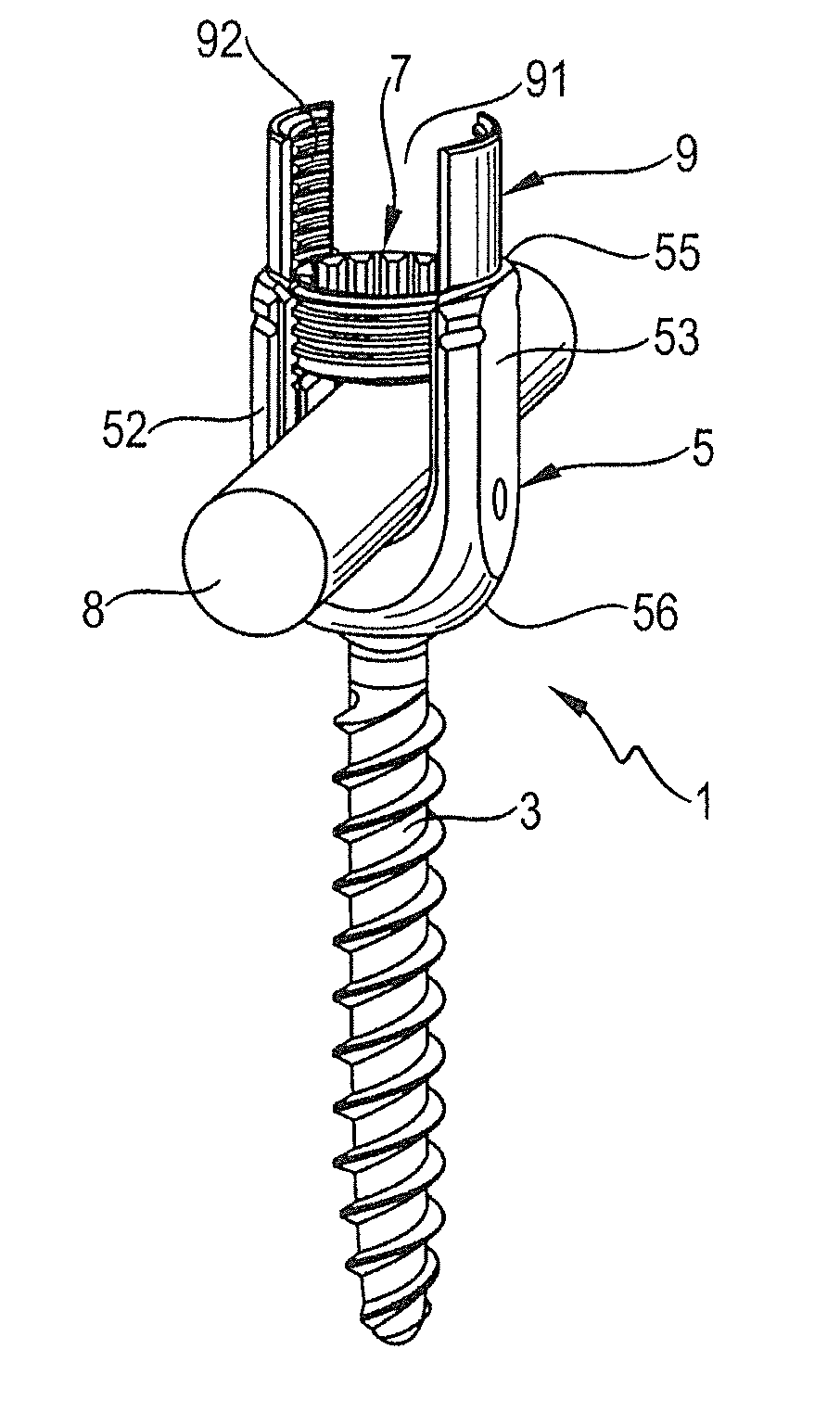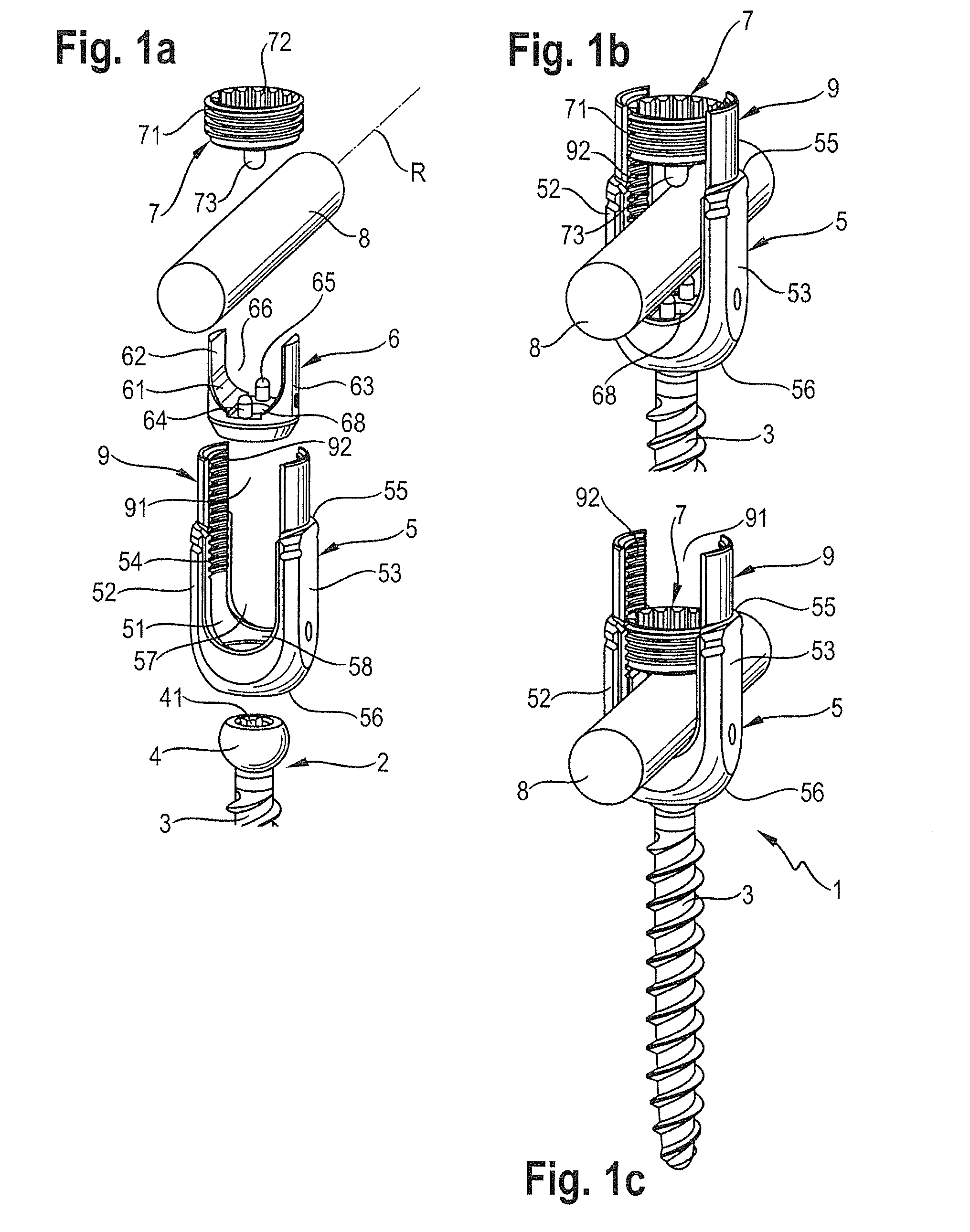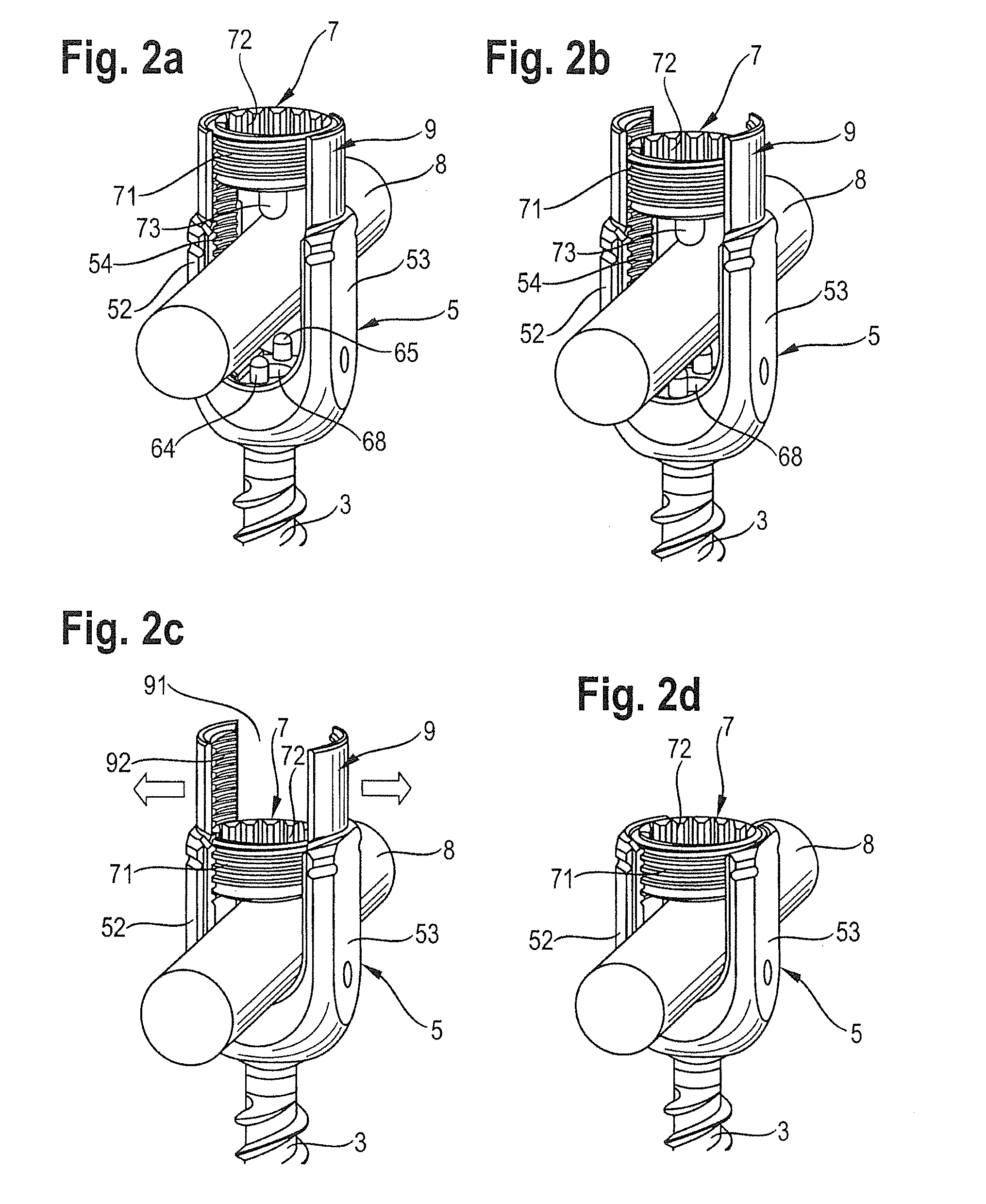Bone anchoring assembly
- Summary
- Abstract
- Description
- Claims
- Application Information
AI Technical Summary
Benefits of technology
Problems solved by technology
Method used
Image
Examples
Embodiment Construction
[0031]A bone anchoring assembly comprises one or more (not shown) bone anchoring devices 1 and a rod 8, wherein the bone anchoring devices 1 can be interconnected via the rod 8.
[0032]As shown in FIGS. 1a to 4d, the bone anchoring device 1 comprises a bone anchoring element 2 in the form of a polyaxial bone screw having a shank 3 with a bone thread and a tip at one end and a head 4 having an engagement structure 41 at the opposite end. The bone anchoring device 1 furthermore comprises a receiving part 5, a pressure element 6, a locking element 7 and a tube-shaped extension 9 integrally formed with the receiving part 5.
[0033]The receiving part 5 is substantially cylindrical and comprises a first end 55, a second end 56 and a coaxial bore 57 extending from the first end 55 to the second end 56 and tapering in an area near the second end 56 such that, as shown in FIG. 3a, the head 4 of the bone anchoring element 2 is pivotably held in the receiving part 5 at the second end 56. Furthermo...
PUM
 Login to View More
Login to View More Abstract
Description
Claims
Application Information
 Login to View More
Login to View More - R&D
- Intellectual Property
- Life Sciences
- Materials
- Tech Scout
- Unparalleled Data Quality
- Higher Quality Content
- 60% Fewer Hallucinations
Browse by: Latest US Patents, China's latest patents, Technical Efficacy Thesaurus, Application Domain, Technology Topic, Popular Technical Reports.
© 2025 PatSnap. All rights reserved.Legal|Privacy policy|Modern Slavery Act Transparency Statement|Sitemap|About US| Contact US: help@patsnap.com



